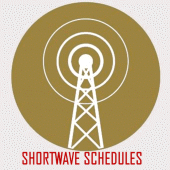
Shortwave Radio Schedules 5.0.1 APK
- Version: 5.0.1
- File size: 2.73MB
- Requires: Android 4.0+
- Package Name: com.msi.shortwave
- Developer: Stephen Cooper
- Updated Oct 25, 2023
- Price: Free
- Rate 3.54 stars – based on 1353 reviews
Update API Level
This app provides schedules and frequencies for shortwave radio broadcasts throughout the world. Information is also included on some utility stations, Firedrake jammer etc.
Information is taking from the Eibi schedule (http://www.eibispace.de/) and AOKI Schedule.
Location permissions are for mapping features for Google Maps API and displaying your current location on a map. For full source code see - https://code.google.com/p/shortwaveschedules/
RECORDING PERMISSION - This is for recording your DX catches or anything else you are listening to using the built in logging option. If you choose to share the log then the mp3 recording is uploaded to a server I run along with the station name and frequency (but no information about the user or your location) and a link is returned to be shared for example http://9915.khz.mobi/b .
The app has the following features:
*Schedules easily updated from Eibi and stored on device meaning data connection is not needed once schedules are downloaded.
* Search by time showing all stations broadcasting to a chosen target area at a specific time
* Search by station showing either complete station schedule and frequencies or only broadcasts of a station at a chosen time
* Search by frequency to identify a station you are listening to either at a specific time or any time.
* Search by language to find stations only broadcasting in a specific language.
* Shows maps of transmitters location and beam direction from AOKI list
* Log your DX catches, record audio recordings of the station and share your logs using Android share options.
Results show the station name, the broadcast start and end time, the target area of the station (EU, Asia, Africa, North America etc.) and a list of frequencies including the transmitter location (swipe across to see more frequencies)
Thanks to David Giménez for the translation into Spanish and Paolo Romani for the Italian translation.
If you have any comments or suggestions please email me.
